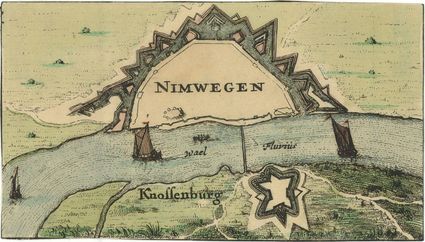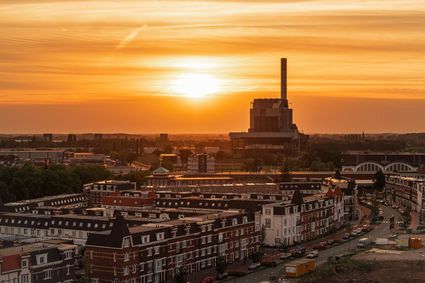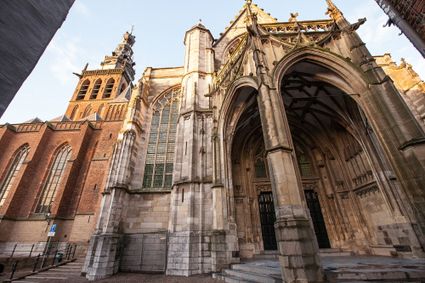De Gryze Stroomgod, evacuations and flood threats
Nijmegen is bursting at the seams with historical stories, ranging from leading figures to ordinary people, from neighbourhoods to political events. The Canon of Nijmegen encompasses the most important stories about Nijmegen’s history. One of these stories tells the tale of Nijmegen on Sunday January 25, 1995. The water level in the Waal river is constantly rising because of the heavy rain and snowfall in Alpine countries. In 1995, spectacularly high water levels attract thousands of spectators, causing chaotic scenes in Benedenstad. A flood seems to be only a matter of time, and the world press – who are camped out in Hunnerpark – seem to agree.
January 30, 1995: evacuation of the Land van Maas en Waal and the Ooijpolder
This fear wasn’t unfounded, because an enormous wave of water was rolling in from Germany towards the Dutch delta. Whether or not the river dykes would hold out against it was unclear. The mayor of Nijmegen at the time, Ed d'Hondt, happened to be the chairman of the regional disaster committee at Nijmegen and took no chances. On January 30, he announced the mandatory evacuation of the Land of Maas en Waal and the Ooijpolder. Tens of thousands of people left their homes behind to stay with family or friends – those who couldn’t were taken in by private organisations and the government. In Nijmegen, thousands of evacuees were housed in convents, barracks, and sports halls. A few tension-filled days followed – but the water level dropped, and on February 6, Hans Dijkstal, Minister of the Interior, gave evacuees permission to return to their homes.
 Aerial photo: High water levels in the Waal, between the Waal-bridge and the railway bridge, seen from a North-eastern angle: Lent is on the right side
Aerial photo: High water levels in the Waal, between the Waal-bridge and the railway bridge, seen from a North-eastern angle: Lent is on the right side
Previous threats
The almost-flood of 1995, with its crisis-filled atmosphere, an impending catastrophe, and mass evacuation, still had a deep impact on Nijmegen. Nevertheless, the city had always been familiar with high water levels, the presence of floating ice, and floods – for example, in 1809, when the largest flood in the area surrounding the rivers occurred. Administrators and citizens had to come to the aid of both the residents of Benedenstad and the population of the Ooijpolder and the Over-Betuwe. King Louis Napoleon himself came to Nijmegen to offer its citizens some comfort, which was a welcome gesture for a city which, as was the case in 1799, was “crammed with people who […] had been rescued from their homes by barges.” Scenes like this happened often in the nineteenth century (1820, 1855, 1861). But even though high water levels were also a regular occurrence in the twentieth century, catastrophes of this magnitude rarely happened. 1926 was the only year in which the city had to act as a shelter, after the Maasdijk near Overasselt had collapsed and the Land of Maas en Waal was flooded completely. Since then, memories of flooding and disaster relief have faded – until the flood threats of 1993 and 1995 brought the power of the “gryze stroomgod” (grey god of currents) back into Nijmegen’s collective memory.
Immerse yourself in the rich history of the oldest city in the Netherlands, because Nijmegen has a lot of stories to tell you. Curious? You can read all about it in this historical timeline.



